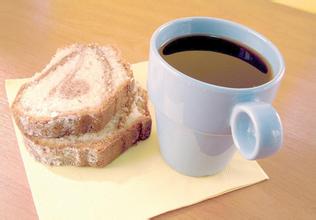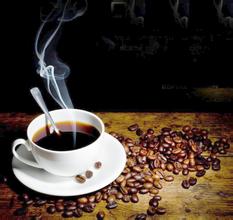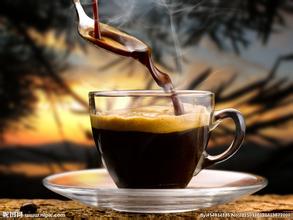Cliff Manor introduced by Jamaican Coffee Manor flavor and taste of Jamaican coffee producing area
In 1725, Nikolai? Sir Sir Nicholas Lawes brought the first blue mountain coffee trees from Martinique to Jamaica and planted them in the St. Andrew area. In eight years, Jamaica exported more than 375 tons of pure coffee. In 1932, when the Jamaican law was passed to encourage coffee farming to reduce the island's dependence on sugar exports, coffee production peaked and more than 15000 tons of coffee was harvested.
In 1948, the quality of coffee had declined and Canadian buyers refused to renew their contracts, so the Government of Jamaica established the Coffee Industry Committee and made changes to the "Jamaican Coffee Industry" to standardize the process and improve the quality of coffee. to make marketing equal in order to save the fate of top coffee. By 1969, the market was guaranteed by the use of Japanese loans to improve the quality of production. By 1981, about 1500 hectares of land in Jamaica had been reclaimed for coffee cultivation, followed by investment in another 6000 hectares of coffee land. in fact, the Blue Mountains area today is a small area with a planting area of only 6000 hectares. it is impossible to grow all coffee marked "Blue Mountain" there. Another 12000 hectares of land is used to grow two other types of coffee (non-Blue Mountain Coffee): Alpine Top Coffee (High Mountain Supreme) and Jamaican premium coffee (Prime Washed Jamaican). Their quality and taste are not as good as those of Blue Mountain.
You might ask what makes Jamaican Blue Mountain Coffee so special?
The answer is everything about it. The real Blue Mountain Coffee is one of the most advantageous coffee growing conditions in the world. The weather, geological structure and topography of Jamaica provide a unique ideal place. Designated Jamaican Blue Mountain Coffee can only be grown in the Blue Mountain area, northeast of the Jamaican capital Kingston. Coffee grows in mountains ranging from 1500 to 5000 feet above sea level, with cool, foggy and frequent rainfall
Make this rich land Rain Water reconcile. Here people use mixed planting to grow coffee trees next to banana and avocado trees on terraces. The coffee tree is mainly the typical "Geisha High Bred" of Yue Cup guests. Seeds from these trees have been exported to other countries, such as Hawaii, Kenya, Papua New Guinea and elsewhere, but wherever they go they also have the ability to recreate the taste of Blue Mountain coffee beans.
Some small estates also grow Blue Mountain Coffee, such as Wallenford Estate, Sliver Hill Estate and Atlanta Estate in J. Martinez. Even the largest landowners in the region are small-scale plantations by international standards, many of which are small landowners whose families have been working on the land for two centuries. The coffee industry in Jamaica faces a series of problems, such as the impact of hurricanes, increased labor costs and difficult mechanization of terraces. It is difficult to rationalize planting on many small estates and farms.
However, Blue Mountain Coffee is a coffee retailer that values credibility and keeps some coffee in stock anyway. A leading British retailer said: regardless of the price, he will continue to sell Blue Mountain coffee all year round because he has many customers who only recognize "Blue Mountain".

Important Notice :
前街咖啡 FrontStreet Coffee has moved to new addredd:
FrontStreet Coffee Address: 315,Donghua East Road,GuangZhou
Tel:020 38364473
- Prev

Introduction of Jamaican Coffee Manor Yinshan Manor Jamaican Coffee Flavor
By 1981, about 1500 hectares of land in Jamaica had been reclaimed for coffee cultivation, followed by investment in another 6000 hectares of coffee land. In fact, today's Blue Mountain area is a small area with a planting area of only 6000 hectares, and it is impossible to grow all the coffee marked Blue Mountain there. Another 12000 hectares of land is used to grow the other two types of coffee.
- Next

Introduction of Nicaraguan coffee flavor and taste introduction of Nicaraguan Coffee Manor Joy Manor
Beautiful sour taste, moderate mellow Nicaraguan coffee belongs to the Central and South American style coffee, although the acidity is not very high, but it feels refreshing. The mellow degree is also not high, but the overall feeling is just right, neither thin nor too strong. To make it easier to accept. The taste of red wine can be vaguely felt in the shallow sour taste, which is also a major feature of Nicaraguan coffee.
Related
- Does Rose Summer choose Blue, Green or Red? Detailed explanation of Rose Summer Coffee plots and Classification in Panamanian Jade Manor
- What is the difference between the origin, producing area, processing plant, cooperative and manor of coffee beans?
- How fine does the espresso powder fit? how to grind the espresso?
- Sca coffee roasting degree color card coffee roasting degree 8 roasting color values what do you mean?
- The practice of lattes: how to make lattes at home
- Introduction to Indonesian Fine Coffee beans-- Java Coffee producing area of Indonesian Arabica Coffee
- How much will the flavor of light and medium roasted rose summer be expressed? What baking level is rose summer suitable for?
- Introduction to the characteristics of washing, sun-drying or wet-planing coffee commonly used in Mantenin, Indonesia
- Price characteristics of Arabica Coffee Bean Starbucks introduction to Manning Coffee Bean Taste producing area Variety Manor
- What is the authentic Yega flavor? What are the flavor characteristics of the really excellent Yejasuffi coffee beans?

